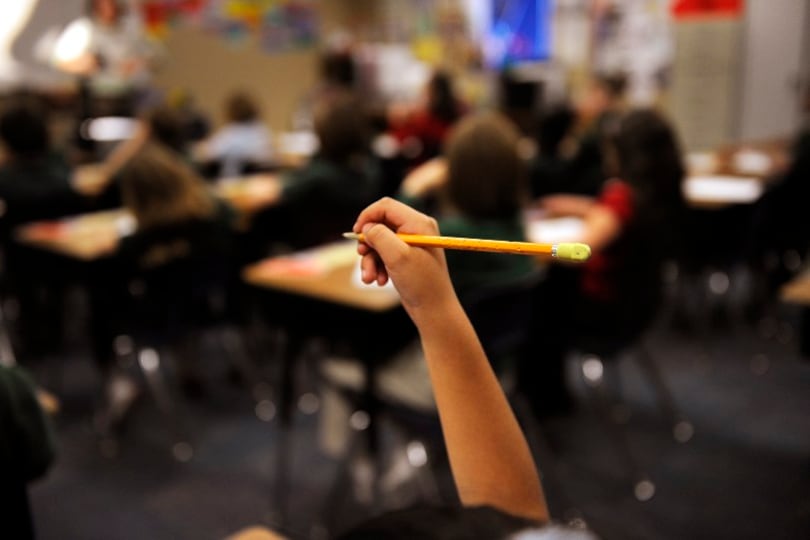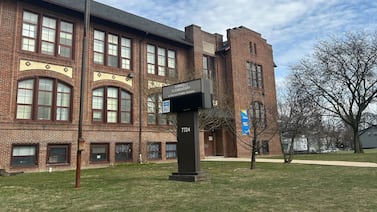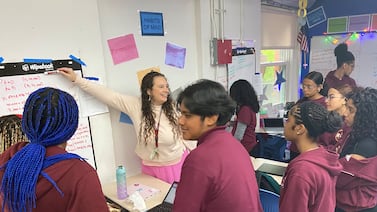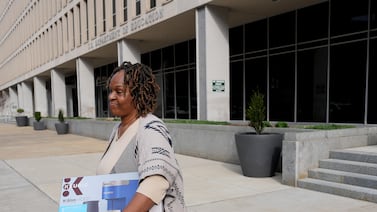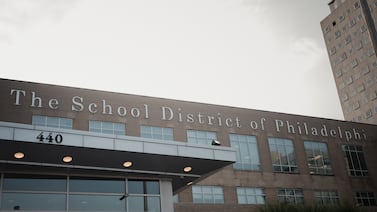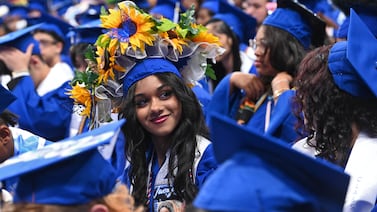Eight Denver elementary schools, one K-8 school, and one middle school could close at the end of this school year if the school board follows recommendations Superintendent Alex Marrero announced Tuesday. The 10 schools would consolidate with other schools in the district.
All 10 of the schools are district-run schools. The school board will hear a presentation on the recommendations Nov. 3. A vote is scheduled for Nov. 17.
“We know that these decisions are not easy for our community, but they are necessary for our scholars,” Marrero said in a press release.
“These recommendations will not only help right-size our school district,” he said, “they will allow our scholars access to more well-rounded educational experiences, and will also put the school district in a position to better address our staffing needs across the district.”
The schools Marrero is recommending for closure are:
Columbian Elementary. Columbian students would be reassigned to Trevista at Horace Mann, though all students can choose to attend any school in the district.
The district didn’t include this year’s enrollment numbers in its announcement, but Columbian had 218 students last year, according to district data. Of those 218 students, 74% were Hispanic, 15% were white, and 7% were Black. More than three-quarters of students — 78% — qualified for subsidized school meals, an indicator of family poverty.
Palmer Elementary. Most Palmer students would be reassigned to Montclair School of Academics and Enrichment. Kindergarten through fifth grade would be at Montclair and preschool would be at Palmer.
Palmer had 258 students last year, according to district data. Of those 258 students, 56% were white, 17% were Hispanic, and 16% were Black. Less than a third of students — 26% — qualified for subsidized school meals.
Math Science Leadership Academy. MSLA students would be reassigned to Valverde Elementary.
MSLA had 154 students last year, according to district data. Of those 154 students, 86% were Hispanic, 6% were Black, and 4% were white. Nearly all students — 95% — qualified for subsidized school meals.
Schmitt Elementary. Schmitt students would be reassigned to Godsman Elementary.
Schmitt had 201 students last year, according to district data. Of those 201 students, 68% were Hispanic, 18% were Black, and 8% were white. Nearly all students — 93% — qualified for subsidized school meals.
Eagleton Elementary. Eagleton students would be reassigned to Cowell Elementary.
Eagleton had 258 students last year, according to district data. Of those 258 students, 84% were Hispanic, 8% were white, and 3% were Black. Most students — 90% — qualified for subsidized school meals.
Fairview Elementary. Fairview students would be reassigned to Cheltenham Elementary.
Fairview had 174 students last year, according to district data. Of those 174 students, 49% were Hispanic, 39% were Black, and 7% were white. Nearly all students — 95% — qualified for subsidized school meals.
Colfax Elementary. Most Colfax students would be reassigned to Cheltenham Elementary. Kindergarten through fifth grade would be at Cheltenham and preschool would be at Colfax.
Colfax had 255 students last year, according to district data. Of those 255 students, 66% were Hispanic, 16% were Black, and 11% were white. Most students — 88% — qualified for subsidized school meals.
International Academy of Denver at Harrington. IAD at Harrington would close and its students would join a new enrollment zone containing Columbine Elementary and Swansea Elementary. Students who live in enrollment zones are not assigned to a specific school but rather asked to choose between several schools in the zone.
IAD at Harrington had 167 students last year, according to district data. Of those 167 students, 75% were Hispanic, 11% were Black, and 2% were white. Most students — 88% — qualified for subsidized school meals.
Denver Discovery School. Denver Discovery would close and its students would be sent to other schools in the Greater Park Hill/Central Park Enrollment Zone.
Denver Discovery had 113 students last year, according to district data. Of those 113 students, 44% were Black, 36% were Hispanic, and 5% were white. Most students — 83% — qualified for subsidized school meals.
Whittier K-8. Whittier would close and its students would be sent to other schools in the Greater Five Points Elementary Enrollment Zone and the Near Northeast Middle School Enrollment Zone.
Whittier had 227 students last year, according to district data. Of those 227 students, 49% of were Black, 39% were Hispanic, and 7% were white. Most students — 90% — qualified for subsidized school meals.
Denver’s seven-member elected school board has the final say on which schools close. Four of the seven board members have past experience with school closures, and some have said they oppose them. The board recently pushed back on a recommendation to close an alternative school, Montbello Career and Technical High School, which spared it from closure.
Marrero cited declining enrollment as the reason for recommending closing schools. The 90,000-student Denver Public Schools has lost about 6,000 elementary students since 2014, when elementary enrollment peaked.
Decreasing birth rates and rising housing costs that push families out of the city will cause continuing enrollment decline, district officials predict.
Fewer students means less funding. Denver schools are funded per pupil, and schools with low enrollment struggle to afford a robust staff of teachers, mental health workers, and others, which sometimes leads the schools to cut programming or combine classes.
But closing schools is a controversial solution. Closures can be traumatic for students, families, and teachers, who all often vehemently oppose the option.
Closures also often have an outsize impact on low-income communities of color. That’s true of Marrero’s recommendations, too. At nine of the 10 schools, most students are Black and Hispanic and come from low-income families.
Marrero’s recommendations are informed by criteria developed by a committee of parents, teachers, and community members. In June, the committee recommended Denver close elementary and middle schools with fewer than 215 students, as well as those with fewer than 275 students that expect to lose 8% to 10% more students over the next two years.
The committee also recommended that charter elementary or middle schools that have not been financially solvent for two or more years should close.
Charter schools are publicly funded and approved by the Denver school board but independently run by their own boards of directors. In the past four years, 11 charter schools have closed on their own, many due to low enrollment.
In a separate announcement Tuesday, Denver’s STRIVE Prep charter network said it is closing one of its middle schools, STRIVE Prep - Lake, at the end of the school year.
Marrero refers to the closures he’s recommending as consolidations or unifications. The difference, district officials have said, is that in a consolidation, some of the norms, values, and programs from the closing school — such as dual language or arts programs — would move to the school receiving its students.
Denver is not the only district considering school closures. The superintendent of neighboring Jeffco Public Schools has recommended closing 16 elementary schools due to low enrollment. Jeffco announced that recommendation Aug. 25, and its board is set to vote Nov. 10, giving the community about 11 weeks to provide feedback.
Denver will have a little more than three weeks until its vote.
If you are having trouble viewing this form, go here.
Melanie Asmar is a senior reporter for Chalkbeat Colorado, covering Denver Public Schools. Contact Melanie at masmar@chalkbeat.org.

